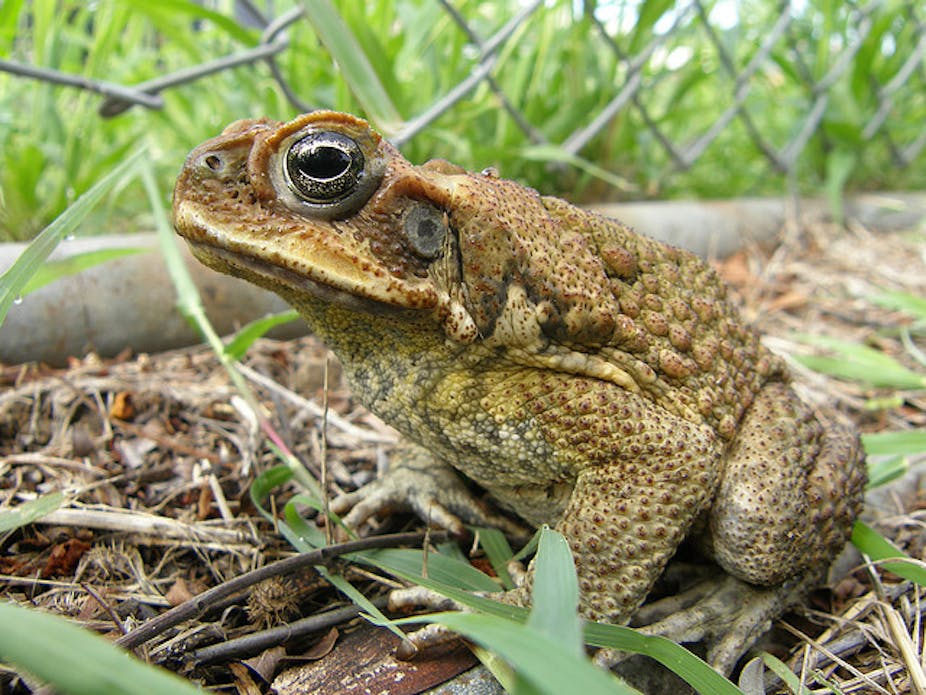Some 150 years ago, Charles Darwin proposed a mechanism for evolutionary change; but is there something beyond natural selection driving evolution?
My colleagues and I think so, and we believe it has come from an unlikely source – the much-maligned cane toad.
These large poisonous frogs from Central and South America are spreading through tropical Australia at an increasing rate.
When they were first released in north-eastern Queensland in 1935 (in a naïve attempt to control beetles in sugar cane fields), the toads began spreading at about ten to 15 kilometres a year.
But they have accelerated ever since, and the current invasion front is sweeping into Western Australia at some 60 kilometres a year.
Why are the toads moving so much faster now than they did 70 years ago? It’s due to genetic changes.
The offspring of “invasion-front” toads are also fast movers, even if they’ve been raised in captivity. So why have the toads evolved to be long-distance runners instead of couch potatoes?
The orthodox explanation for this change would be natural selection – that is, faster-dispersing toads have survived better, or produced more offspring, than their slower counterparts.
That process could result in faster and faster toads through the generations, in the usual Darwinian view.
But we think something else is going on.
It seems there may be more disadvantages than advantages to a toad that disperses quickly. We’ve radio-tracked a lot of toads, and have found that the fastest-dispersers are the ones most likely to be found and eaten by a predator.
Also, the frontline toads often experience severe arthritis in their spines because of the pressures placed upon them by moving so quickly and so often.
And the frontline toads don’t breed very often.
None of this seems to fit the idea of faster dispersal evolving because it confers a benefit to a toad’s survival and reproduction – that is, natural selection.
Instead, we think the evolution of cane toad dispersal rates is a consequence of genes for rapid movement sorting out through space.
Any mutation that makes a toad move faster is likely to end up at the frontline; and any mutation that slows a toad down, or makes it move around in circles, will end up far behind the front.
So genes for moving fast, moving every night and moving in a straight line accumulate at the invasion front – with the result that the frontline moves quicker and quicker.
This process never requires any individual toad to benefit from faster dispersal, so it’s not natural selection, but something else entirely.
What is this mysterious new non-Darwinian process? We’ve called it “spatial sorting”. It’s not as important as natural selection, because it only works for certain traits (those that affect dispersal rate) and in some situations (a range-expanding species).
But under those limited conditions, it can be really important. The toads are telling us that natural selection is not the only evolutionary process out there in this complicated world.
Read the full PNAS paper describing this idea here.

